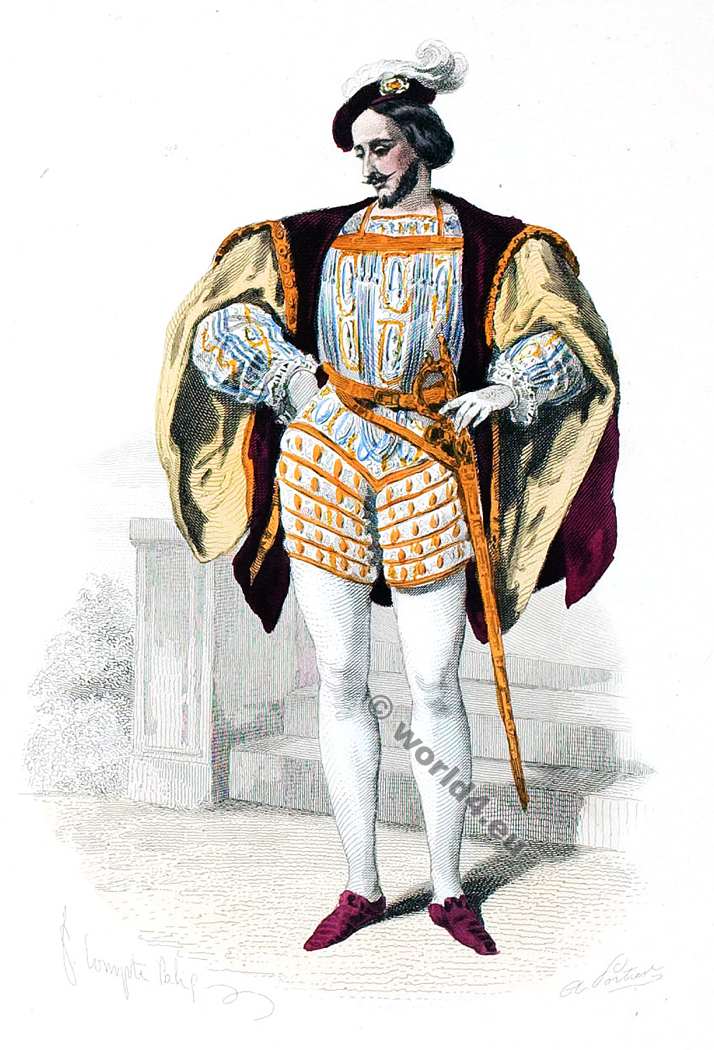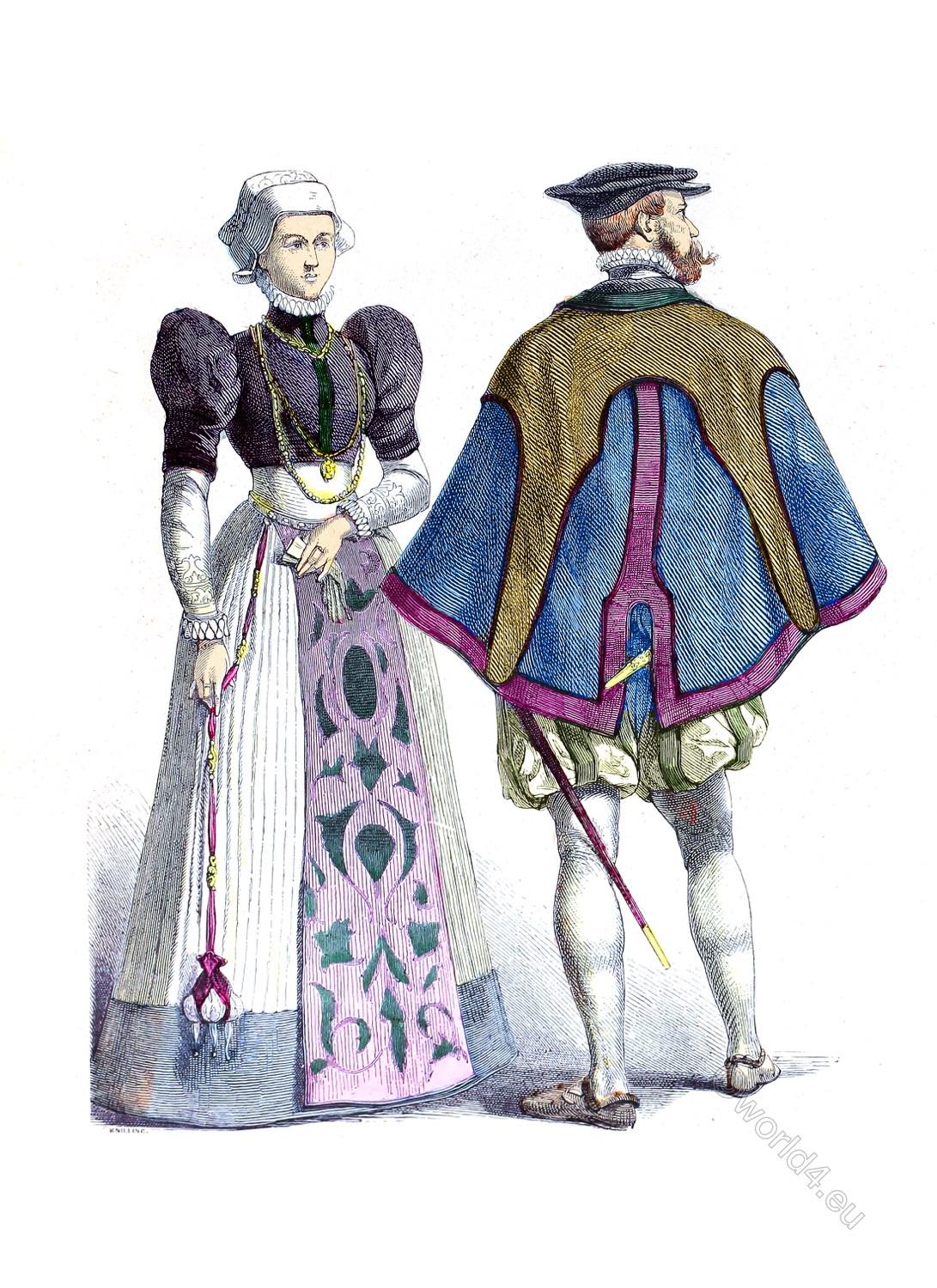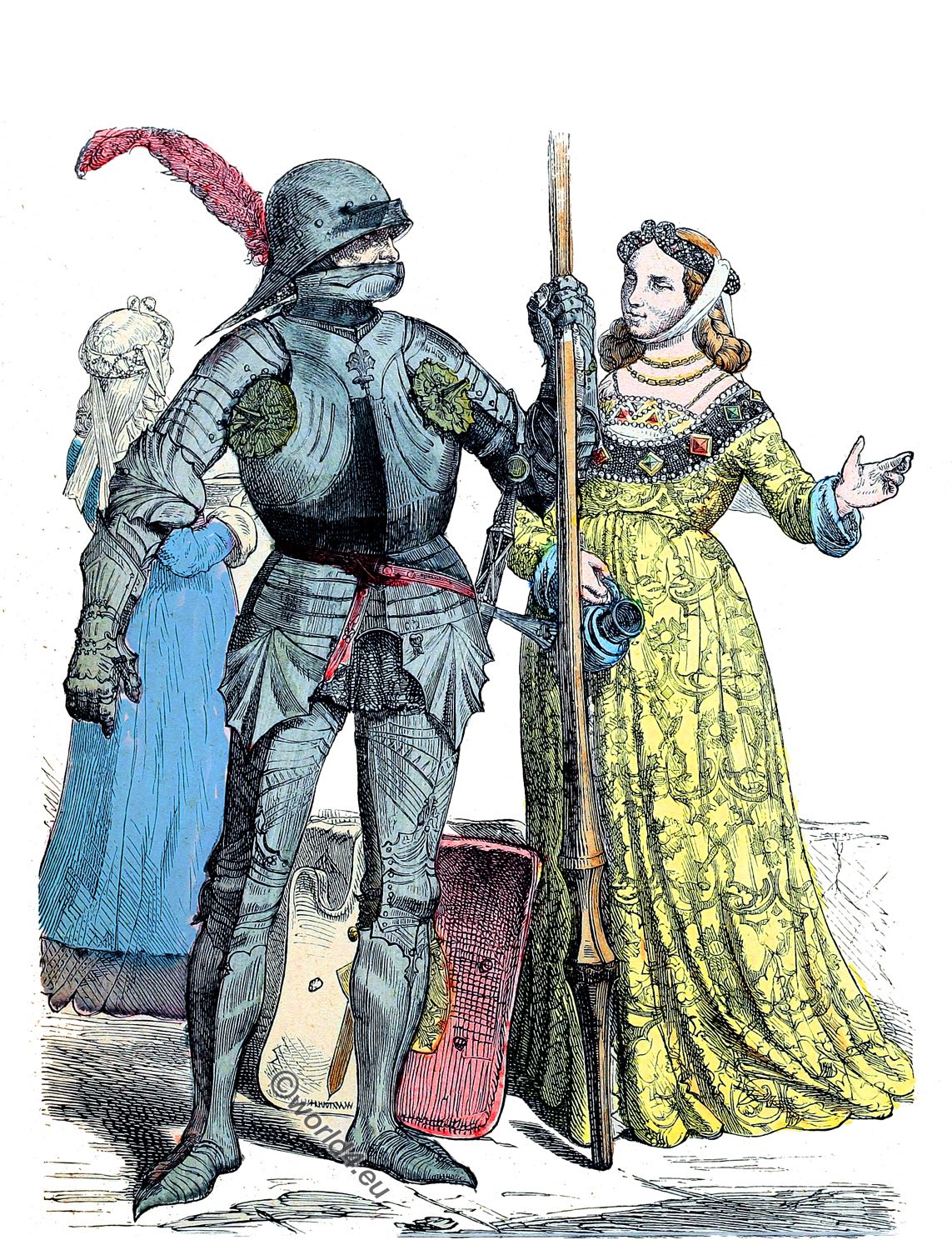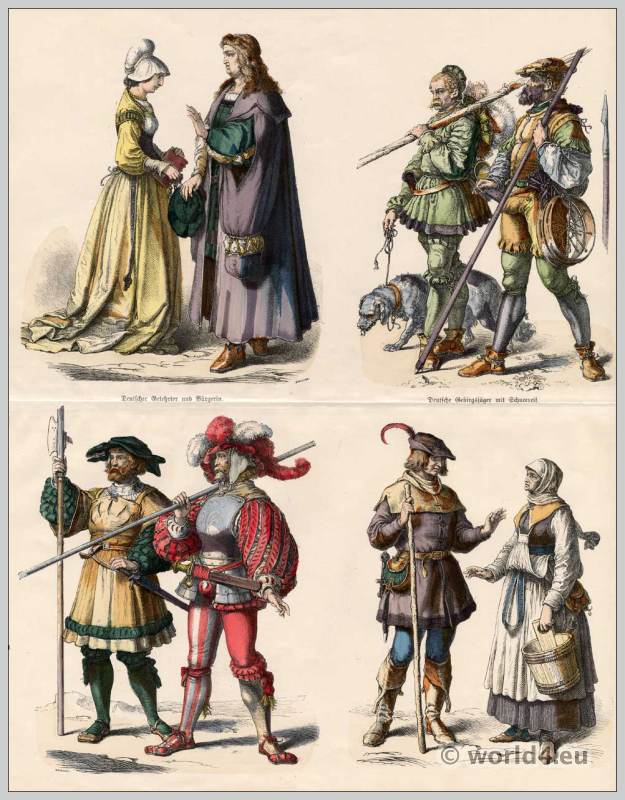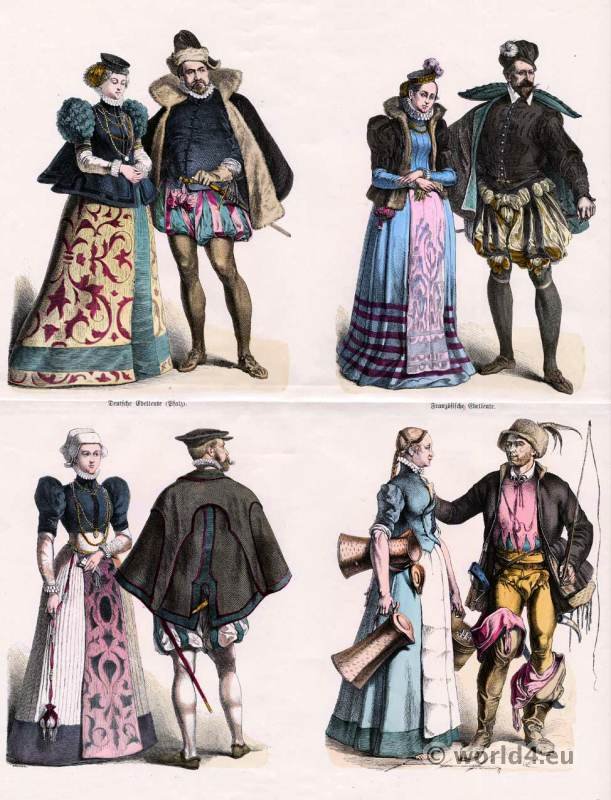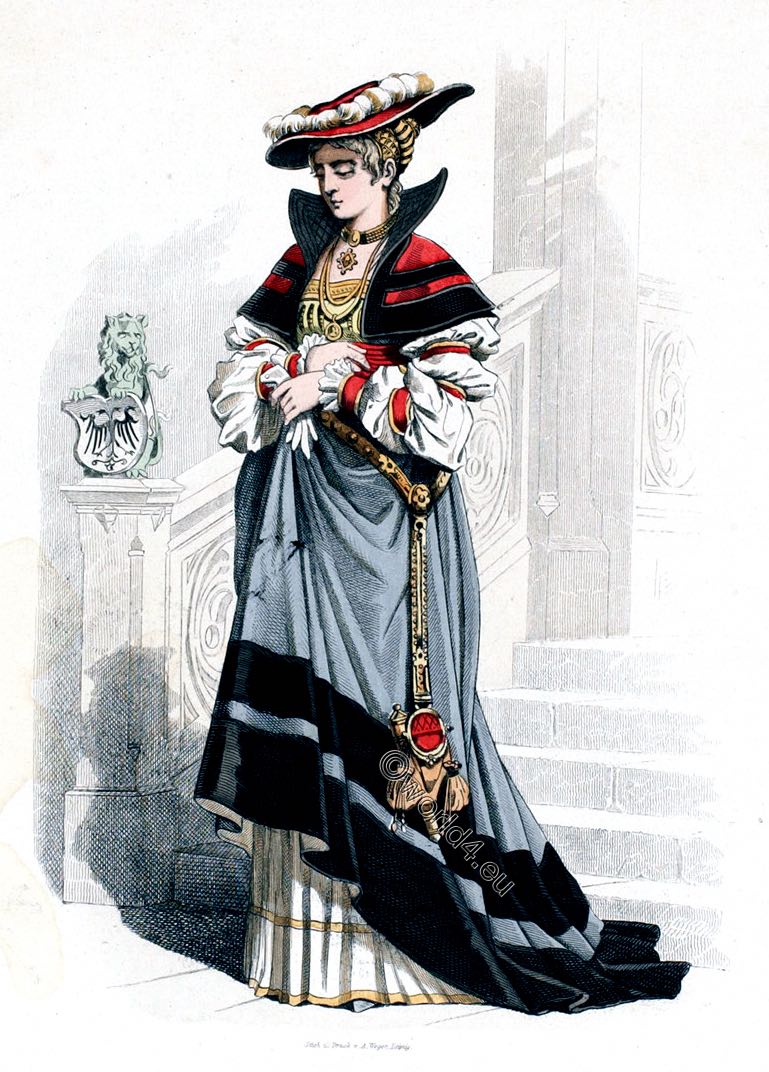
GERMAN NOBLEWOMAN.
Sheets for costume studies.
A German noblewoman with a red beret and a partlet of red silk with black velvet.
Beginning of the XVI century.
By C. E. Doepler.
A German noblewoman at the beginning of the sixteenth century has just left one of the richly decorated balustrades in the staircases that we so often find in the patrician houses of Nuremberg’s heyday. Here the wide-margined beret comes to the fore, decorated with a wreath-shaped feather decoration and placed on a golden calotte, shading the lady’s face.
The beret is of red velvet, the edge is decorated with gold cord. The women’s headdress was modelled on that of the men, who used to wear a similar headdress, often in combination with the gold cap or calotte enclosing the back of the head.
The dress of the present figure consists of bodice and skirt. The bodice usually had a square neckline, sometimes narrower, sometimes wider, around the neck and the upper part of the bust; it was often of a different colour and fabric than the skirt, in this case red velvet or red silk; the skirts of velvet were usually trimmed with gold or silver brocade, whereas the silk skirts were usually trimmed, as here, with two or more wide stripes of darker velvet.
The dragging of the skirt was moderate and, after the skirt was significantly reduced in length at the front in the first decade of the sixteenth century, it was shortened more and more until around 1530 the cut of the skirt was made evenly all around only so long that only the hem of the dress touched the floor.
In our picture we see the dress slightly raised and under it a white robe of Camelot, doubled with a simple gold border. A belt of rich work in leather and metal, with pocket and the knife cutlery so often used at that time, fell sideways onto the robe and probably also served to lift the dress. The sleeves, which in those days were often slit and puffed, are shown here in four large puffs, four times bound with velvet and decorated with gold trimmings.
A so-called Goller of red silk, richly and broadly trimmed with black velvet and lined and quilted with black silk, covers the shoulders and neck with its raised, stiffened collar. Golden necklaces and other jewellery, the value of which was determined in the most precise manner for each rank by the many dress codes of the various cities that followed at that time, came to the noblewoman and were worn frequently, including finger rings in all shapes.
A partlet or partlett is as a neck or shoulder garment, a sleeveless clothing that is worn in 16th century as a kind of loose cape around the neck and over the shoulders and can sometimes also cover the chest, back or neck.
Gloves, embroidered and quilted, of textile or fine leather, probably also with small longitudinal slits on the fingers, were considered essential by the nobility and the richer of both sexes.
Source: Sheets for costume studies. Costume history. Historical and folk costumes. First volume. Descriptive part. Edited by A. von Heyden. Berlin. Franz Lipperheide. 1887.
Related
Discover more from World4 Costume Culture History
Subscribe to get the latest posts sent to your email.

